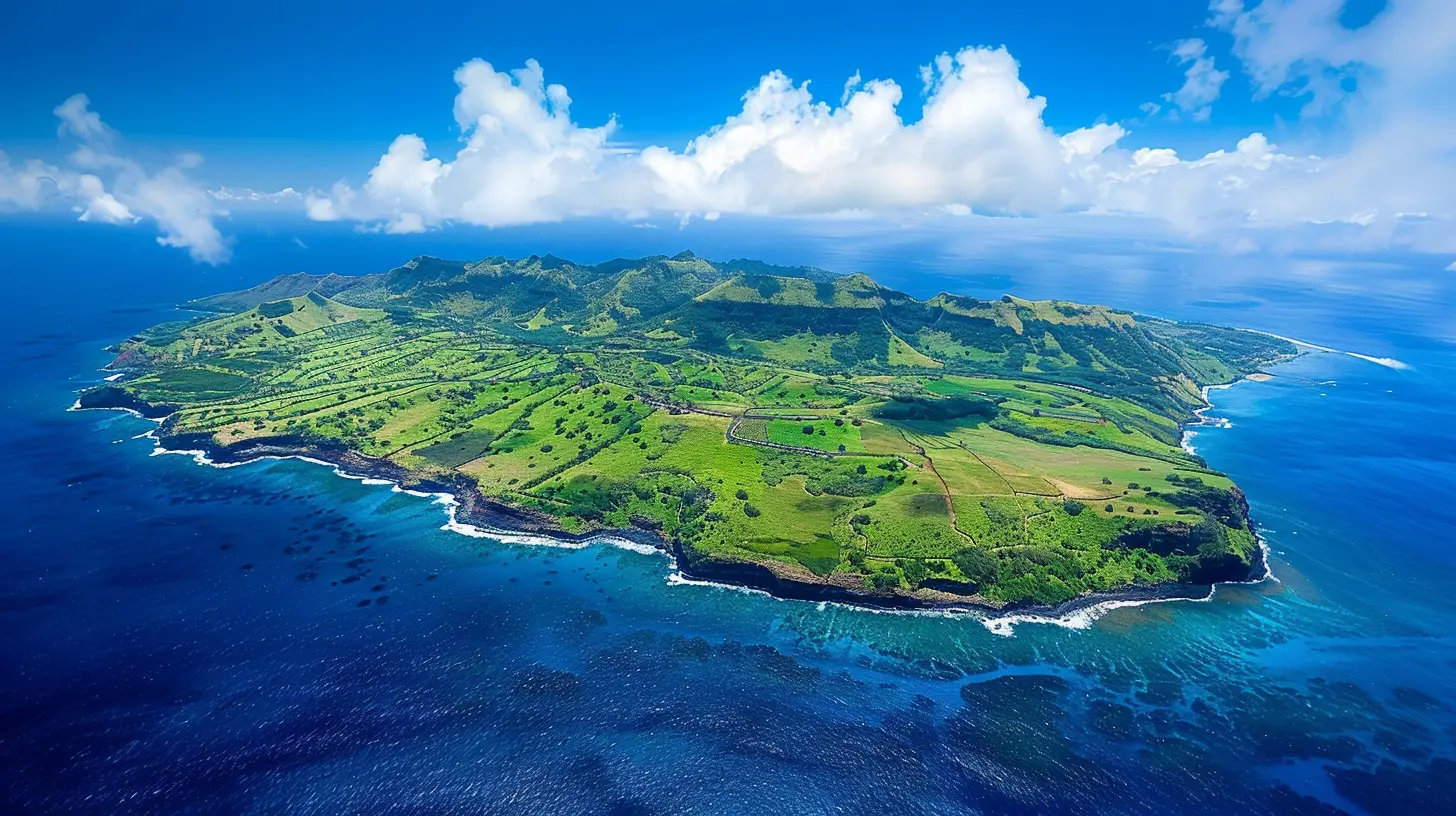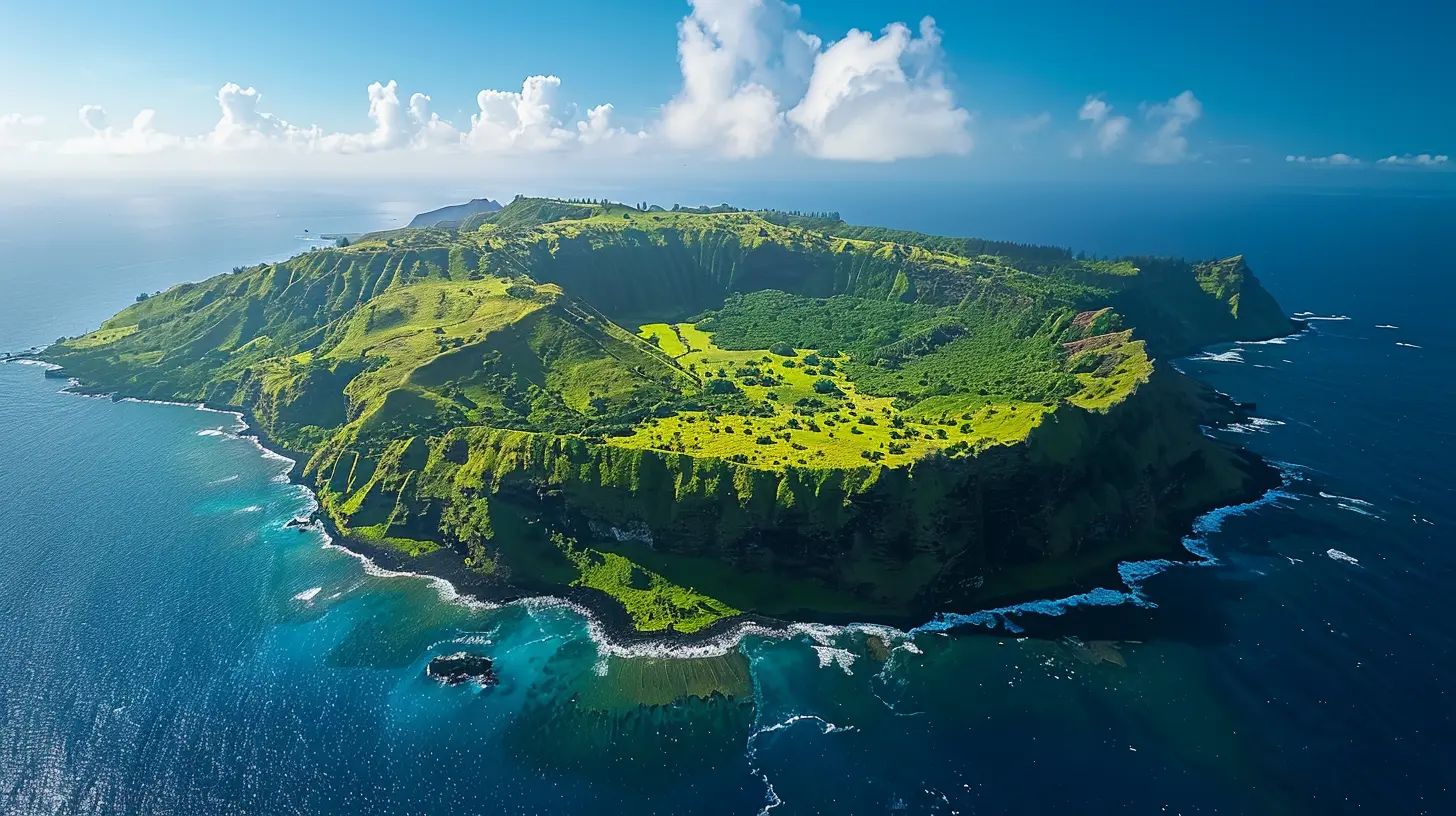A Cultural Journey to Rapa Nui: Easter Island's Hidden Treasures
19 September 2025
There's a place in the heart of the Pacific Ocean where time whispers through the wind and history peeks from behind ancient stone faces. That place is Rapa Nui — better known as Easter Island. But oh, don’t be fooled by that quaint postcard name. This tiny speck of volcanic land, over 2,000 miles from the nearest coast, holds the secrets of a lost civilization, a heartbeat of Polynesian pride, and a spiritual energy that will tug at your soul.
So, let’s dive headfirst into a cultural journey to Rapa Nui — where carved giants stand tall, traditions breathe fire, and hidden treasures aren't just in the earth, but in every smile, every chant, and every wave that kisses its shore.
🌊 A Land Born of Fire and Mystery
Rapa Nui isn’t your standard tropical island. It’s raw. Rugged. Almost lunar in parts. Born from volcanic fire millions of years ago, this triangle of lava rock has one foot in myth and another in history.When you land on the island (usually flying in from Santiago, Chile), there’s a pause — a breath. Look around. You’ll feel it. The silence. It's not empty — it’s full. Full of stories waiting to be told, songs waiting to be sung.
How did this isolated place become home to such an advanced and mysterious culture? Who carved the moai — the massive stone statues — and why did they stop? These are the kinds of questions that make Rapa Nui so magnetic.
🗿 Meeting the Moai: Silent Guardians of the Past
Let’s be honest — the moai are probably why you’ve heard of Easter Island at all. But they’re so much more than tourist attractions or selfie backgrounds. These towering volcanic figures, some weighing over 80 tons, are the physical embodiment of ancestor worship.Local belief says the moai represent deified chiefs — their eyes once inlaid with coral, watching over villages like ancient security cameras with souls.
🌅 Ahu Tongariki: The Crown Jewel
Picture this: fifteen moai standing in a solemn line, backs to the ocean, faces to the rising sun. That’s Ahu Tongariki — the largest ceremonial platform on the island. Come at sunrise. Trust me. There’s something almost spiritual about standing there in the golden light, watching shadows stretch across centuries.💡 The Fallen Moai: Tales of a Civilization in Crisis
Not all moai are standing. In fact, many are toppled — like drunken giants resting after a wild night. Why? That’s where it gets juicy. Scholars believe tribal wars, deforestation, or internal revolt could’ve led to the moai being pulled down. The truth? Still debated. Just another mystery tucked in the island’s basalt bones.
🌺 The Language of the Ancestors
Did you know Rapa Nui has its own language? It’s also called Rapa Nui — go figure. Though Chilean Spanish is commonly spoken, many islanders still converse in their mother tongue, keeping their heritage alive with every syllable.Listen closely to local songs and chants. The rhythm is hypnotic, the words soulful. Even if you don’t understand them, you feel them — like ocean waves rocking your spirit.
🎭 Tapati Rapa Nui: The Island’s Beating Cultural Heart
If you’re lucky enough to visit during February, you’ll witness the island’s most vibrant celebration: the Tapati Festival.🌕 More Than a Party — It’s a Living History
This isn’t just a festival — it’s an immersion. Two teams made up of locals compete in traditional sports, crafts, and performances. Think body painting, banana trunk sliding (yes, that's a thing), and chanting contests that’ll give you goosebumps.During Tapati, Rapa Nui’s soul comes alive. You don’t just watch — you feel it. It’s like stepping into a time portal where the past and present dance together under the stars.
🌳 The Natural Canvas: Landscapes Painted by the Gods
Rapa Nui isn’t just about moai and myths. The land itself is a masterpiece. From rolling green hills to rugged cliffs and wildflower meadows, the island feels like it was plucked from a dream.🌋 Rano Raraku: The Moai Factory
This volcanic crater is where the magic happened. Scores of incomplete moai still lie here, half-buried in grass like secrets waiting to be awakened. Walk around and you’ll see statues in all stages — as if the sculptors just stepped away for lunch… 500 years ago.🌄 Orongo and the Birdman Cult
Perched on the edge of Rano Kau’s cliffs is Orongo — a ceremonial village tied to one of the island’s most dramatic religions: the Birdman Cult.Forget moai for a second. This was about survival, power, and daring. Young men would plunge off the cliff, swim through shark-infested waters to an islet, and bring back the first sooty tern egg. All for their tribe’s honor. Insane? Maybe. But also wildly poetic.
🥥 Island Life, Simple and Soulful
Despite its fame, Rapa Nui isn’t crowded. There are no five-star resorts or mega malls. That’s part of the charm. Life here is slow, sincere, and unfiltered.Lodging? Family-run guesthouses with ocean views and homemade breakfast. Dining? Fresh ceviche, taro, sweet potatoes, and grilled tuna — all served with a side of warm conversations.
Talk to the locals. Hear their stories. From tattoo artists to fishermen, everyone here is a storyteller.
🧭 Hidden Corners Most Tourists Miss
Want to really earn your cultural explorer badge? Go off the beaten path.🐚 Anakena Beach: Where Legends Were Born
White sands. Turquoise waters. Palm trees swaying lazily. Anakena isn’t just a paradise — it’s sacred. This is where King Hotu Matu’a is believed to have first landed, founding Rapa Nui civilization. Today, it’s a serene spot where you can picnic under the same trees and imagine history unfolding.🌿 Caves and Petroglyphs
The island is dotted with lava tube caves like Ana Te Pahu and Ana Kai Tangata. Inside? Cave art. Petroglyphs of birds, waves, and mysterious symbols. It’s like walking into a prehistoric diary.Bring a flashlight and a dash of courage. Some of those caves feel very alive.
🌍 Preserving the Culture, Protecting the Land
Tourism helps the island survive, but too much of it could also harm the very things we come to see. That’s why many Rapa Nui are fighting to keep their culture intact — from language classes in schools to conservation efforts for the moai.As travelers, we’ve got a role too. Respect sacred sites. Don’t climb statues (seriously, don’t). Buy from local artisans. Learn a few Rapa Nui words. Show that you’re not just a visitor — you’re a guest.
✈️ Planning Your Visit to Rapa Nui
Alright, you’re sold. But how do you get there?- Flights: LATAM offers direct flights from Santiago, Chile (about 5–6 hours).
- Best Time to Visit: February for the Tapati Festival; April to November for cooler weather.
- Visas: No visa needed for most tourists, but you must fill out a special entry form and have a hotel reservation.
- Currency: Chilean Peso.
Pack light, bring a sense of wonder, and don’t expect strong Wi-Fi. This place is about disconnecting from screens and reconnecting with soul.
❤️ Let the Island Change You
Rapa Nui is more than just a bucket-list destination. It's a love letter to human resilience, creativity, and connection. It’s a place that asks you to slow down, look deeper, and feel more.You’ll leave with more than just photos. You’ll carry whispers of chants, the weight of history, and maybe, just maybe, a fire in your belly to protect the fragile beauty of cultures still dancing in the wind.
So, are you ready to walk among giants?
all images in this post were generated using AI tools
Category:
Oceania TravelAuthor:

Winona Newman
Discussion
rate this article
1 comments
Amy Baxter
Pack your imaginary snorkel and your favorite fedora—Rapa Nui is calling! From giant stone moai that seem to wink at you to the 'secret' dance moves of the locals, this island is a quirky treasure chest waiting for your delightful discoveries!" 🌊🌺
September 19, 2025 at 4:10 AM

Winona Newman
Absolutely! Rapa Nui is a fascinating blend of history and culture, ready for exploration. Can't wait to dive into its wonders!" 🌊🌺


